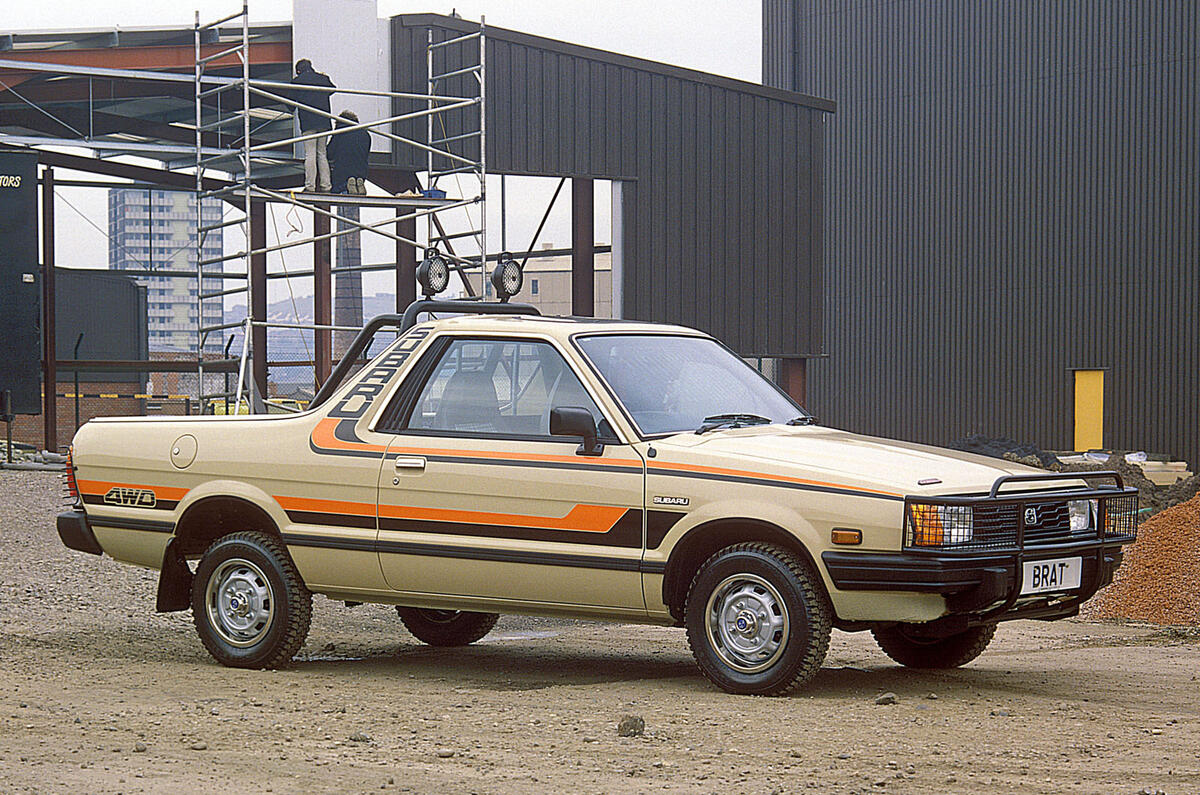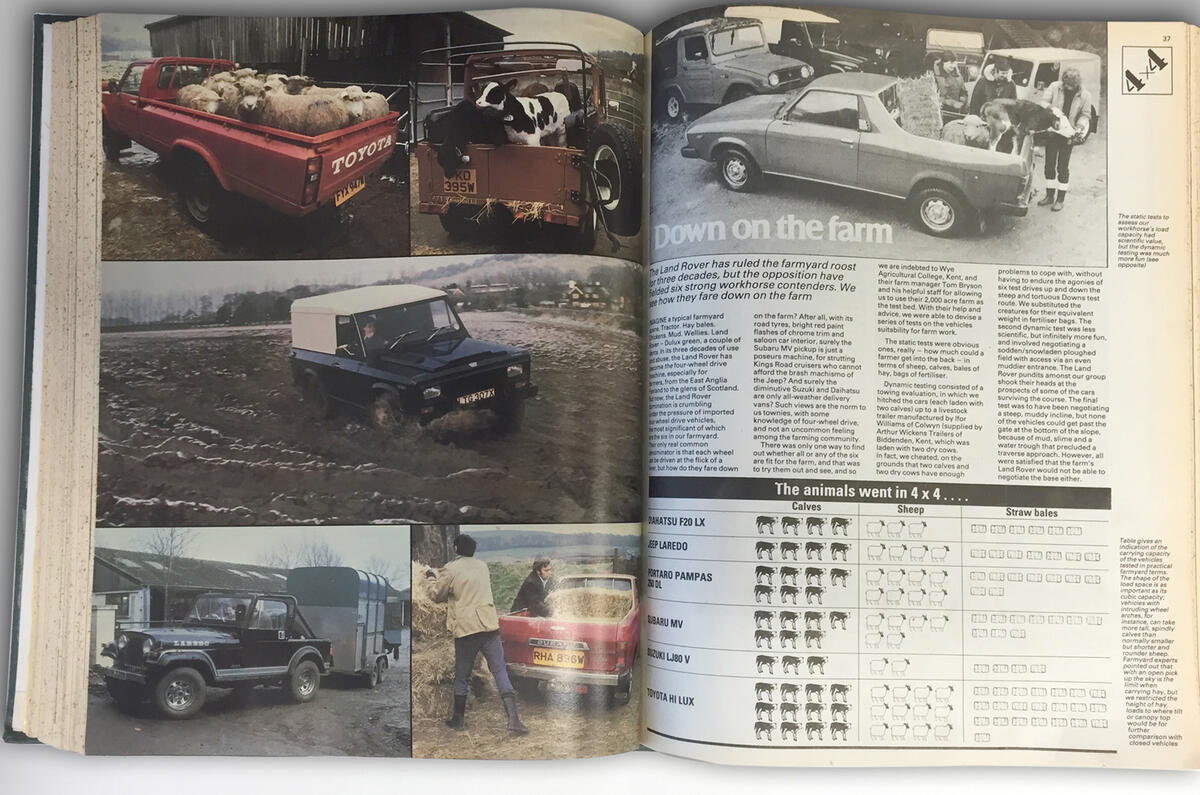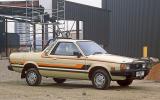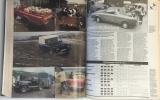An Arctic freeze gripped the UK during early 1982, laying the icy ground for an Autocar comparison test with a difference.
A glut of imported 4x4s threatened the Land Rover’s position as the best utilitarian go-anywhere vehicle, so the pretenders were gathered for a six-car test.
The vehicles were the Daihatsu F20 LX, Jeep Laredo, Subaru MV, Suzuki LJ80 V, Toyota Hi Lux and, er, Portaro Pampas 260 DL. A disparate group, as Autocar’s testers admitted: “Their only real common denominator is that each wheel can be driven at the flick of a lever, but how do they fare down on the farm?”
The farm? Yes, for this test, Autocar headed to Wye Agricultural College’s 2000-acre farm for a series of challenges to assess farm-worthiness. First up was the load test: how many calves, sheep or straw bales could each vehicle carry?
“The shape of the load space is as important as its cubic capacity; vehicles with intruding wheel arches, for instance, can take more tall, spindly calves than normally smaller but shorter and rounder sheep,” reckoned our testers, going on to declare the Hi Lux, which could accommodate 12 animals or 22 bales, a clear winner.
Dynamic tests comprised towing and a drive across a snow-laden ploughed field. The Daihatsu “plodded through our test field in a no-nonsense manner” but “the lack of a tow-hitch precluded an assessment of its towing ability”.
The test hinted at the divide between utilitarian 4x4s and the more stylish luxury SUVs that predominate today. The Jeep, for example, “appears in the form of a King’s Road cruiser, kitted out in cloth seats, carpets and BF Goodrich-shod alloy wheels”. Even so, it “traversed our test field with scornful ease”.
The Romanian-designed, Portuguese-built Portaro “was the only vehicle on test that actually looked like a Land Rover”. The car’s “load space and torquey engine gave it the thumbs-up from our experts as a real workhorse”.
Subaru’s MV pick-up was derided for “looking decidedly flashy and potentially incapable with its road tyres and low ground clearance”, but after waltzing through most of the tests, it “silenced its critics with an excellent performance and capacity”.
The diminutive Suzuki was “hardly worth considering as a load carrier; we got only three sheep into the back”. However, it “did not baulk at the ploughed field”.








Join the debate
Add your comment
4x4 diffs
Article is Way Off
What are we going to do with you? Many problem's here:
1) You'll have to decide if this is a Brito-phyillic cheer-leader's website, because in the States the Land Rover is not "the best utilitarian go-anywhere vehicle" by a long shot. That crown would go to a Jeep Wrangler Rubicon with lift kit and perhaps 37-inch Mickey Thompson tires. You will see very few Land Rover's on the Rubicon Trial or mud-slinging in Georgia.-----------
2) The Subaru "BRAT" was a sales disaster by comparison to other offerings here. It was not competitive. Could it have been improved and modified? Yes, but Subaru have not made that re-committment yet. -------------
3) The vehicle-set you have chosen for this comparison is largely unknown in the States, Canada, or Australia, and they certainly do not represent viable competitors for even this BRAT. If you want to zero-in on pickups for off-road capability, were is the Ford Ranger 4WD or Toyota Tacoma TRD Pro; or, for larger sizes, the Ford Raptor or Ram Power Wagon? Surely you could get examples of these for a truly world-wide comparison test.-------------
=================
I would say Subaru, as a